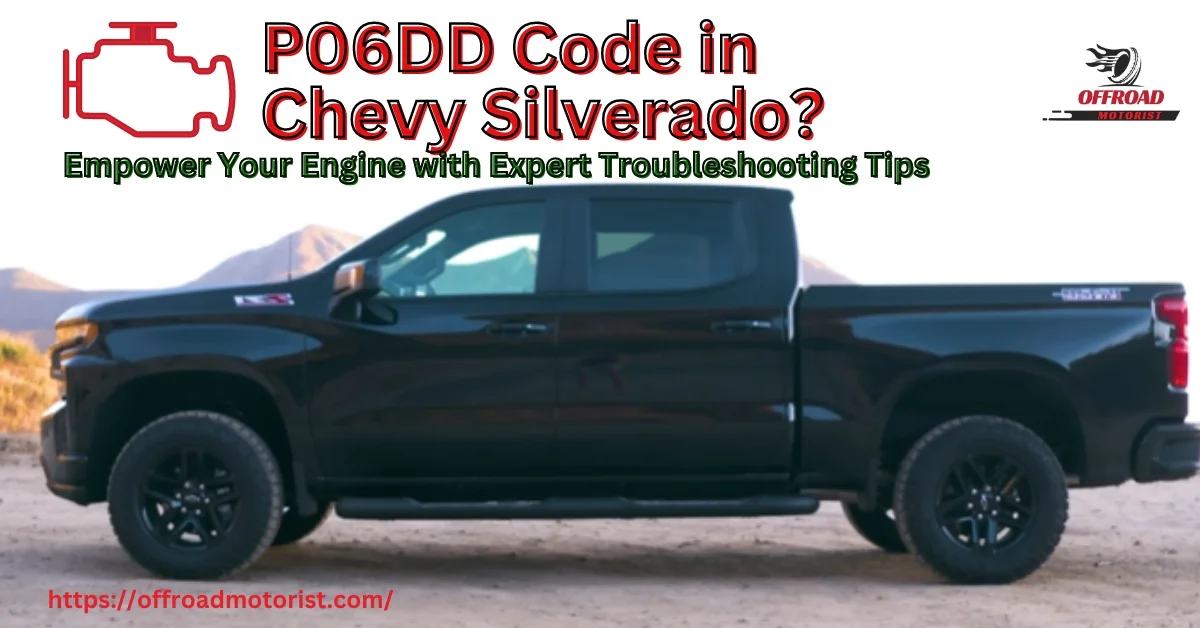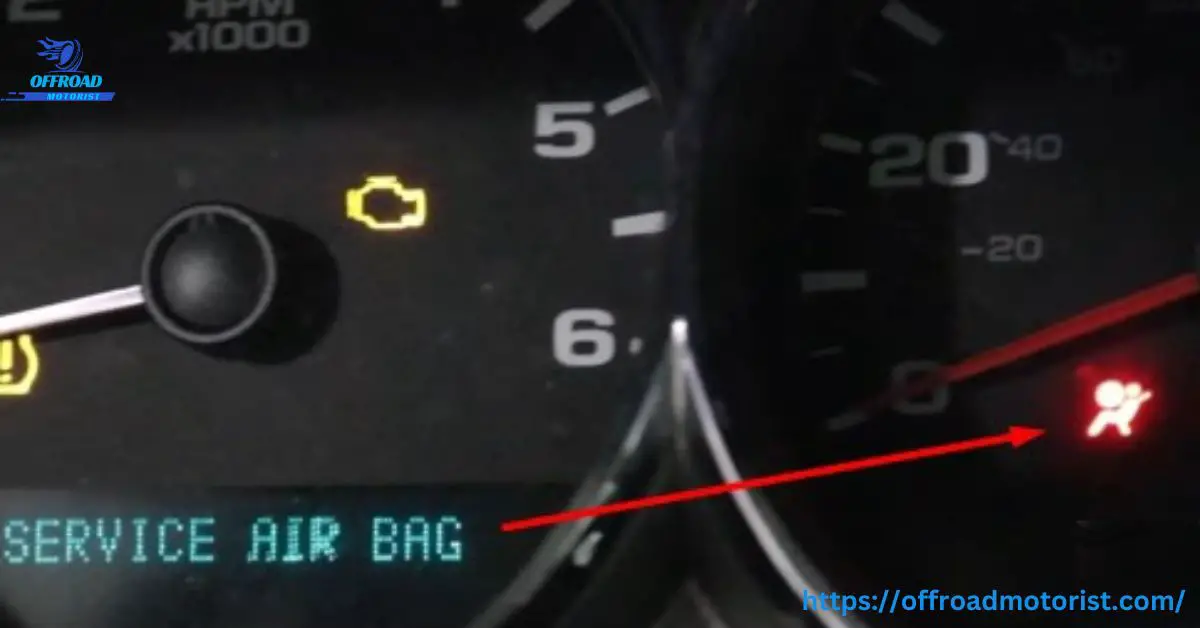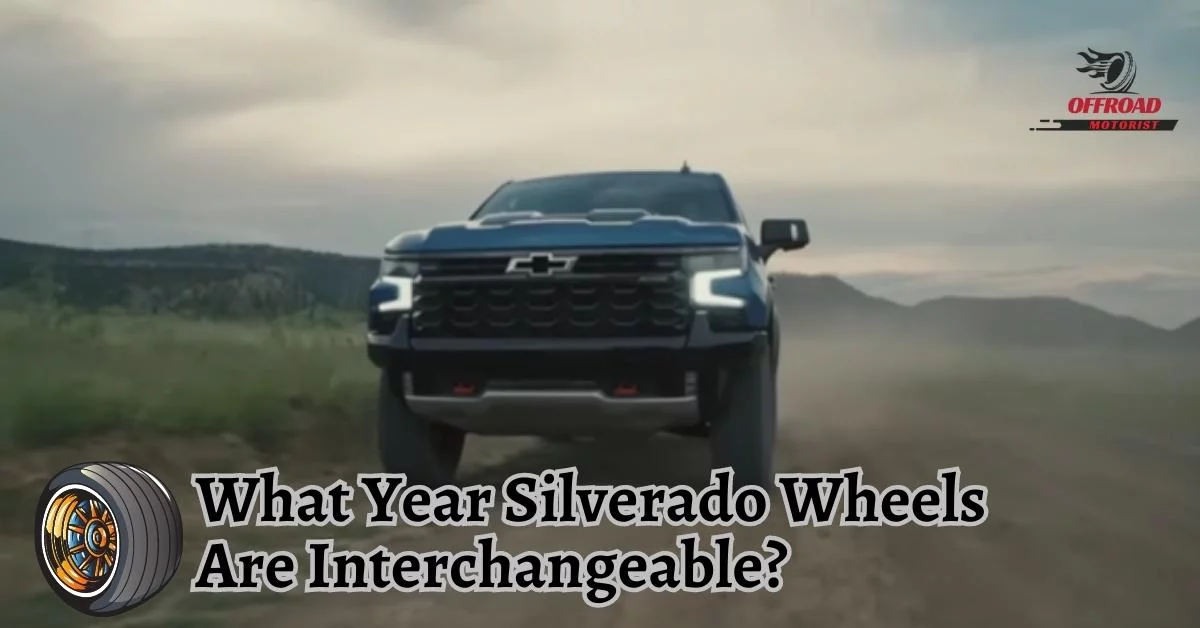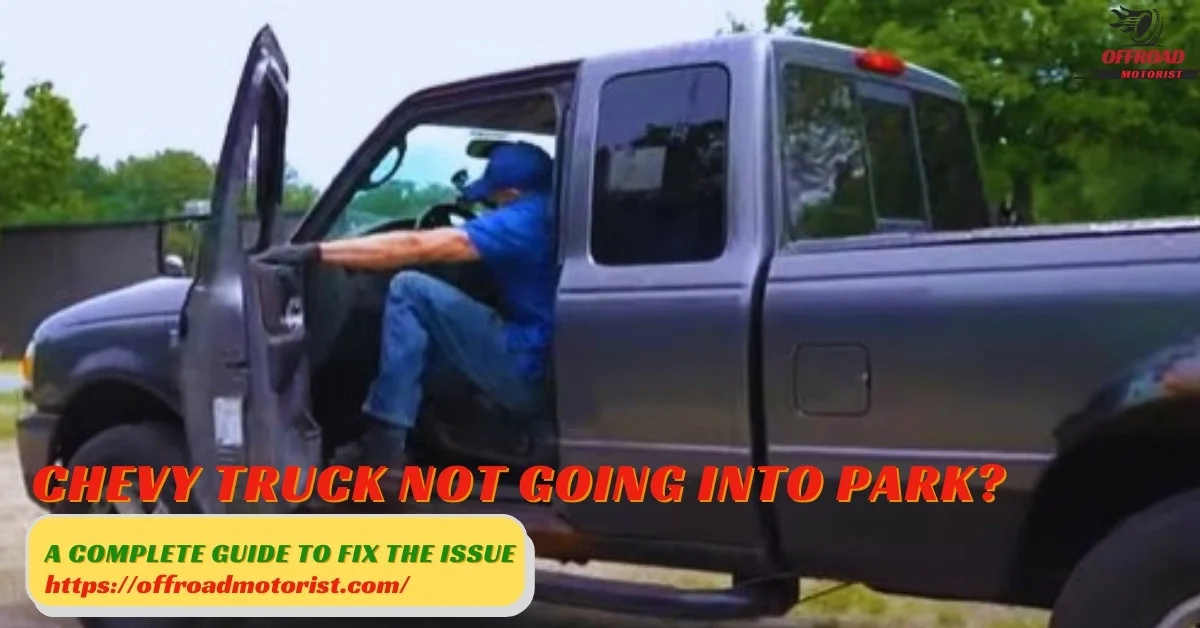Chevy Silverado 4 Wheel Drive Won’t Disengage| Solutions to Get You Back on Track
The Chevy Silverado is renowned for its power, performance, and versatility, with its 4-wheel drive (4WD) system being a prime feature that enhances its off-road capabilities.
However, Chevy Silverado owners may sometimes encounter issues with the 4WD system, such as when the 4 wheel drive won’t disengage. This can be a frustrating and potentially dangerous problem, affecting the vehicle’s handling and fuel efficiency.
This blog post aims to provide valuable troubleshooting tips and solutions to address the common causes of Chevy Silverado 4WD disengagement issues, ensuring a safe and enjoyable driving experience.
So, let’s solve Chevy Silverado 4 wheel drive won’t disengage issue and get you back on track.
Common Causes of 4WD Disengagement Issues
Understanding the potential causes of Chevy Silverado 4WD disengagement issues is crucial in finding the right solution.
This section will delve into the most common reasons behind these problems and provide insights into their symptoms and effects on your vehicle’s performance.
Knowing these causes, you can efficiently diagnose and address the issue with your Chevy Silverado’s 4-wheel drive system.
01. Faulty Transfer Case Motor
The transfer case motor plays a vital role in engaging and disengaging the 4WD system in your Chevy Silverado. A faulty motor can hinder the smooth operation of the 4-wheel drive, preventing it from disengaging properly.
Symptoms of a malfunctioning transfer case motor include grinding noises, an illuminated service 4WD light, and difficulties shifting between 2WD and 4WD modes.
02. Damaged or Worn Vacuum Lines
Your Chevy Silverado’s 4WD system relies on vacuum lines to control the engagement and disengagement of the front axle. Damaged or worn vacuum lines can result in a loss of vacuum pressure, causing the 4-wheel drive to remain engaged.
Common indicators of compromised vacuum lines include hissing sounds, reduced engine performance, and difficulties disengaging the 4WD.
03. Malfunctioning 4WD Switch
The 4WD switch in your Chevy Silverado allows you to control the engagement and disengagement of the 4-wheel drive system. A malfunctioning switch can cause intermittent or persistent issues with disengaging the 4WD.
Symptoms of a faulty 4WD switch may include erratic shifting between 2WD and 4WD modes or an unresponsive 4WD system.
04. Damaged or Worn Electrical Connections
The electrical connections and wiring in your Chevy Silverado’s 4WD system are essential for relaying signals between various components, such as the transfer case motor and 4WD switch.
Damaged or worn electrical connections can disrupt these signals, resulting in disengagement issues.
Signs of compromised electrical connections include flickering dashboard lights, intermittent 4WD operation, and the 4WD system failing to respond to switch commands.
By familiarizing yourself with these common causes of Chevy Silverado 4WD disengagement issues, you can efficiently troubleshoot and address the problem, ensuring a safer and more enjoyable driving experience.
Troubleshooting Tips for Chevy Silverado 4WD Disengagement Issues
Before diving into repairs, it’s essential to pinpoint the root cause of your Chevy Silverado’s 4WD disengagement issue.
This section will provide troubleshooting tips to help you identify the problem and determine the appropriate action.
Following these guidelines can save time and resources by targeting the correct component of your vehicle’s 4-wheel drive system.
01. Inspect the Transfer Case Motor
- Locate the transfer case motor underneath your Chevy Silverado.
- Visually inspect the motor for any visible damage or wear.
- Listen for unusual noises, such as grinding or clicking, while operating the 4WD system.
- Use a multimeter to test the motor’s electrical connections for proper voltage.
- If you notice any issues, the transfer case motor may cause the 4WD disengagement problem.
02. Examine Vacuum Lines for Damage or Wear
- Locate the vacuum lines connected to the front axle actuator and transfer case.
- Visually inspect the vacuum lines for cracks, kinks, or wear.
- Listen for hissing sounds that may indicate a vacuum leak.
- Perform a vacuum pressure test using a vacuum gauge to check for sufficient pressure.
- If you find any issues with the vacuum lines, they may cause the 4WD disengagement problem.
03. Test the 4WD Switch for Proper Operation
- Locate the 4WD switch inside your Chevy Silverado’s cabin.
- Test the 4WD switch by attempting to shift between 2WD and 4WD modes.
- Observe any irregularities or unresponsiveness while operating the switch.
- Use a multimeter to test the switch’s electrical connections for proper voltage and continuity.
- If you identify any issues, the 4WD switch may cause the disengagement problem.
04. Check Electrical Connections and Wiring
- Locate the electrical connections and wiring related to the 4WD system, including the transfer case motor and 4WD switch.
- Inspect the connections and wiring for signs of damage, corrosion, or wear.
- Use a multimeter to test the wiring for proper voltage and continuity.
- Look for any flickering dashboard lights or intermittent 4WD operation that may indicate an electrical issue.
- If you find any problems with the electrical connections or wiring, they may cause the 4WD disengagement issue.
By carefully following these troubleshooting tips, you can effectively diagnose the cause of your Chevy Silverado’s 4WD disengagement problem.
How to Fix Chevy Silverado 4WD Disengagement Issues
Having identified the root cause of your Chevy Silverado’s 4WD disengagement problem, it’s essential to address it efficiently and effectively to ensure your vehicle’s optimal performance.
Here is a step-by-step guide to fix these issues and ensure your 4-wheel drive system operates smoothly and efficiently.
01. Repair or Replace a Faulty Transfer Case Motor
- Disconnect the vehicle’s battery, and park your Chevy Silverado on a level surface.
- Safely raise the vehicle using jack stands to access the transfer case motor.
- Locate the transfer case motor and disconnect its electrical connections and mounting bolts.
- Inspect the motor for visible damage or wear and decide if it requires repair or replacement.
- Install a new or repaired transfer case motor, ensuring accurate alignment and secure attachment.
- Reconnect the electrical connections and test the 4WD system to confirm proper operation.
02. Address Damaged or Worn Vacuum Lines
- Identify the compromised vacuum lines connected to the front axle actuator and transfer case.
- Gently disconnect the damaged vacuum lines from their connection points.
- Measure and cut the necessary length of new vacuum line material, ensuring it matches the original lines.
- Securely attach the new vacuum lines at all connection points, following the original routing.
- Verify the 4WD system’s functionality and check for any remaining vacuum leaks.
03. Clean or Replace a Malfunctioning 4WD Switch
- Locate the 4WD switch in your Chevy Silverado’s cabin.
- Carefully disconnect the electrical connections and release any clips or fasteners holding the switch in place.
- Assess the switch for damage or wear, determining if it needs cleaning or replacement.
- If cleaning, use an electrical contact cleaner to remove debris or buildup from the switch contacts.
- Install a new or cleaned 4WD switch, reconnect the electrical connections, and test the 4WD system for correct operation.
04. Repair or Replace Compromised Electrical Connections and Wiring
- Identify the damaged electrical connections or wiring related to the 4WD system.
- Disconnect the battery and meticulously remove any damaged wiring or connections.
- Utilize soldering, heat shrink tubing, or new wiring harnesses to repair or replace the damaged components.
- Securely reconnect the repaired or replaced electrical connections and wiring, ensuring a proper fit.
- Test the 4WD system’s performance and examine for any lingering electrical issues.
By adhering to these instructions, you can effectively tackle the common causes of Chevy Silverado 4WD disengagement issues and reinstate your vehicle’s performance.
Remember that consistent maintenance and prompt repairs are crucial for maintaining the longevity and reliability of your 4-wheel drive system.
Prevention and Maintenance Tips for Chevy Silverado 4WD Systems
Following preventive maintenance practices and tips is essential to ensure your Chevy Silverado’s 4WD system remains in top condition and functions effectively.
This section will provide valuable advice to help you maintain your 4-wheel drive system’s optimal performance, prevent future disengagement issues, and extend its lifespan.
01. Regularly Check Fluid Levels
- Periodically inspect the transfer case fluid level and condition, following the manufacturer’s recommended intervals.
- Replace the fluid if it appears dirty or contaminated or if the level is too low.
- Always use the recommended fluid type specified in your Chevy Silverado’s manual.
02. Inspect Vacuum Lines and Electrical Connections
- Routinely examine vacuum lines for signs of wear, cracks, or damage, and replace them as needed.
- Check electrical connections and wiring related to the 4WD system for corrosion, damage, or wear, repairing or replacing them as necessary.
- Ensure all connections are securely fastened and that wiring is routed correctly to prevent chafing or damage.
03. Lubricate Moving Parts
- Regularly lubricate the front axle actuator, driveshaft, and other moving parts associated with the 4WD system to prevent wear and corrosion.
- Use the recommended lubricant specified in your Chevy Silverado’s manual and follow the recommended maintenance schedule.
04. Test the 4WD System Periodically
- Operate your 4WD system periodically, even during periods of non-use, to ensure all components remain functional and well-lubricated.
- Listen for any unusual noises or signs of malfunction during operation, and address any issues promptly.
05. Pay Attention to Warning Signs
- Monitor your vehicle for any warning signs, such as unusual noises, dashboard warning lights, or changes in vehicle handling.
- Address potential issues immediately to prevent further damage to the 4WD system and other vehicle components.
06. Consult a Professional Mechanic
- If you need more clarification about the cause of a 4WD disengagement issue or feel uncomfortable performing repairs, consult a professional mechanic for assistance.
- Regularly scheduled maintenance visits can prevent issues and extend the lifespan of your 4WD system.
By following these preventive maintenance practices and tips, you can maintain your Chevy Silverado’s 4WD system in peak condition, ensuring a reliable and enjoyable driving experience.
Proper maintenance prevents potential disengagement issues and contributes to your vehicle’s overall longevity and performance.
Stay proactive in caring for your 4-wheel drive system, and your Chevy Silverado will continue to deliver the power, performance, and versatility you expect.
FAQs about Chevy Silverado 4WD Disengagement Issues
We’ve compiled a list of frequently asked questions related to Chevy Silverado 4WD disengagement issues to help you better understand the problem and provide further guidance. These questions are based on common inquiries, and concerns found online.
Why does my Chevy Silverado’s 4WD system make a grinding noise when trying to disengage?
A grinding noise may indicate a worn or damaged transfer case motor, issues with the front axle actuator, or problems with the gears inside the transfer case.
Can I drive my Chevy Silverado if the 4WD won’t disengage?
It’s not recommended to drive your vehicle with a malfunctioning 4WD system, as it may cause further damage to the vehicle and affect its handling.
How much does it cost to fix a 4WD disengagement issue in a Chevy Silverado?
The cost to fix a 4WD disengagement issue varies depending on your area’s specific problem and labor rates. It’s best to consult a professional mechanic for an accurate estimate.
Is it safe to drive my Chevy Silverado in 2WD if the 4WD won’t disengage?
Driving should be safe if you can manually disengage the 4WD system and drive your vehicle in 2WD mode. However, addressing the underlying issue as soon as possible is essential.
Can I use my Chevy Silverado’s 4WD system on dry pavement?
Using the 4WD system on dry pavement is not recommended, as it can cause excessive wear and potential damage to the drivetrain components.
How often should I engage my Chevy Silverado’s 4WD system?
It’s a good idea to engage your 4WD system at least once a month, even if you don’t need it, to keep the components lubricated and in good working order.
What are the common symptoms of a failing transfer case motor?
Common symptoms include difficulty shifting between 2WD and 4WD, a grinding or clicking noise, and dashboard warning lights.
Can a bad 4WD switch cause the system to not disengage?
Yes, a faulty 4WD switch can cause the system not to disengage correctly, as it may not send the correct signal to the transfer case motor.
Can low transfer case fluid cause 4WD disengagement issues?
Low transfer case fluid can contribute to 4WD disengagement issues by causing excessive wear or damage to internal components, such as gears and bearings.
How can I prevent future 4WD disengagement issues in my Chevy Silverado?
Regular maintenance, including checking fluid levels, inspecting vacuum lines, and lubricating moving parts, can help prevent future disengagement issues and ensure the reliability of your 4WD system.
Final Thoughts on Chevy Silverado 4 Wheel Drive Won’t Disengage
Addressing 4WD disengagement issues in your Chevy Silverado is crucial for maintaining optimal vehicle performance and preventing further damage.
By understanding the common causes, following our comprehensive repair guide, and adhering to preventive maintenance practices, you can ensure a reliable and efficient 4-wheel drive system.
Remember to monitor your vehicle for warning signs, engage your 4WD system periodically, and consult a professional mechanic when necessary.
Proper care and attention will help extend the lifespan of your Chevy Silverado’s 4WD system, providing you with a dependable and enjoyable driving experience.



![Chevy Transfer Case Interchange Chart [Everything you need to Know] chevy transfer case interchange chart](https://offroadmotorist.com/wp-content/uploads/2023/03/chevy-transfer-case-interchange-chart-150x150.jpg)







